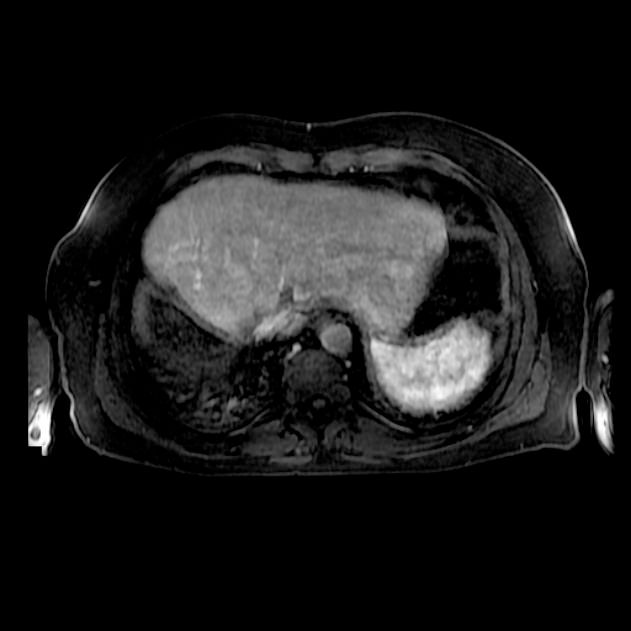Diffusion-weighted MR looks to add new biomarker for oncologic imaging
MR developments over recent years have allowed researchers to explore water molecule motion between cells using diffusion-weighted imaging to indirectly measure cellular density within a tissue. This has provided a new and continuously evolving tool in oncologic imaging for lesion detection, characterisation, and therapy assessment.
MR developments over recent years have allowed researchers to explore water molecule motion between cells using diffusion-weighted imaging to indirectly measure cellular density within a tissue. This has provided a new and continuously evolving tool in oncologic imaging for lesion detection, characterisation, and therapy assessment.
Diffusion has not yet been studied in large enough samples to provide a sound basis for the use of functional biomarkers. Within three to five years, larger studies may well validate parameters extracted by diffusion-weighted imaging (DWI), and diffusion will be used alongside response evaluation criteria in solid tumors (RECIST) to routinely assess tumor response.
Traditionally, shrinking was deemed the most definite tumor “response” post-treatment. But now, diffusion imaging measuring the apparent diffusion coefficient (ADC, representing the mm2/sec that water molecules are able to move between cells) may show that intercellular water movement changes after treatment, even if the size of the tumor does not change.
“Using DWI, future treatments can be more personalized and doctors will have more information to decide whether to continue or increase treatment,” said Prof. Filipe Caseiro-Alves, head of the imaging department at the University of Coimbra, Portugal, and chair of Friday’s special focus session on DWI of the abdomen.


Being able to systematically solve problems using diffusion is related to repeatability and standardization of the technique.
“Not all vendors approach MRI sequences in the same way, and the results obtained on one machine may be very different on another. A Siemens machine, for example, may not yield the same ADC results as a GE machine,” he said.
An ADC value measurement of 1.0 x 10-3 mm2/sec might indicate metastasis on one machine but mean something different on another machine, making direct extrapolations hard. For standardization to occur, hardware needs to produce identical measurements. Science meanwhile needs to come up with values that mean likelihood of malignancy or benign tissue.
“Without machines yielding the same results, studies cannot be transposable to develop standard measurements. There need to be internal standards for equipment, while radiologists should work to agree values and protocols through larger clinical studies,” Caseiro-Alves said.
Some standardization has been achieved. In benign lesions, water movement is freer, but in malignant lesions it is more impeded. Therefore, at extreme values it is possible to differentiate between benign and malignant tissue. For example, 0.9 or 1.0 x 10-3 mm2/sec would indicate a greater likelihood of malignancy and 2.5 x 10-3 mm2/sec would favor benign tissue. However, in the middle, there lies a gray area where measurements are indeterminate and liable to vary depending on the type of scanner and the way in which a sequence is obtained.
Moreover, false positives may occur due to lesions appearing to have restricted diffusion in the case of fibrotic benign tumors. Another problem relates to liver patients with hemochromatosis because iron changes the signal received, leading to different visual impressions, and thus interfering with interpretation.
“Because it is not 100% specific, DWI should be interpreted in conjunction with other information from other techniques such as T2-weighted images and contrast enhancement, as well as morphological imaging,” Caseiro-Alves said.
Current problems in DWI technology, such as low signal-to-noise ratio (SNR) and limited spatial resolution, are likely to be overcome in part through the more widespread use of higher magnetic field strengths, such as 3T. Meanwhile, radiologists should learn how to best apply current knowledge.
“The technique can be unforgiving,” said Dr. Dow-Mu Koh, consultant radiologist in functional imaging at the Royal Marsden NHS Foundation Trust in Sutton, U.K. “If the scan factors are not optimal, image quality will be poor. There is a danger that doctors will rush to do these new techniques but then not do them well.”
Because the technique is relatively new, Koh’s presentation was practical, outlining the broader principles of DWI and how protocols can be optimized to get consistently high-quality images for diagnostic purposes.
“As far as I can see, it is a technique with very little penalty: no contrast is needed and it is quick and radiation-free. DWI now has a variety of clinical applications, including whole-body imaging, which is being widely investigated,” Koh said.
In pancreatic imaging, DWI is more sensitive for detection of pancreatic lesions than conventional MRI. If DWI reveals no unusual pathology, it can be confidently stated that the examination is normal, but with conventional imaging this is not always the case, according to Dr. Celso Matos, an associate professor and head of the MRI division at Erasme Hospital, Free University of Brussels, who also spoke at the session.

Could Ultrafast MRI Enhance Detection of Malignant Foci for Breast Cancer?
April 10th 2025In a new study involving over 120 women, nearly two-thirds of whom had a family history of breast cancer, ultrafast MRI findings revealed a 5 percent increase in malignancy risk for each second increase in the difference between lesion and background parenchymal enhancement (BPE) time to enhancement (TTE).
MRI Study Suggests Shape of White Matter Hyperintensities May Be Predictive of Cognitive Decline
April 7th 2025Emerging research demonstrated that cognitive declines in memory, executive function and processing speed domains were associated with irregular shape of periventricular/confluent white matter hyperintensities.
Can Abbreviated MRI Have an Impact in Rectal Cancer Staging?
April 4th 2025Abbreviated MRI demonstrated a 95.3 percent specificity for rectal cancer and provided strong agreement with the full MRI protocol for T staging and detection of extramural venous invasion, according to newly published research.